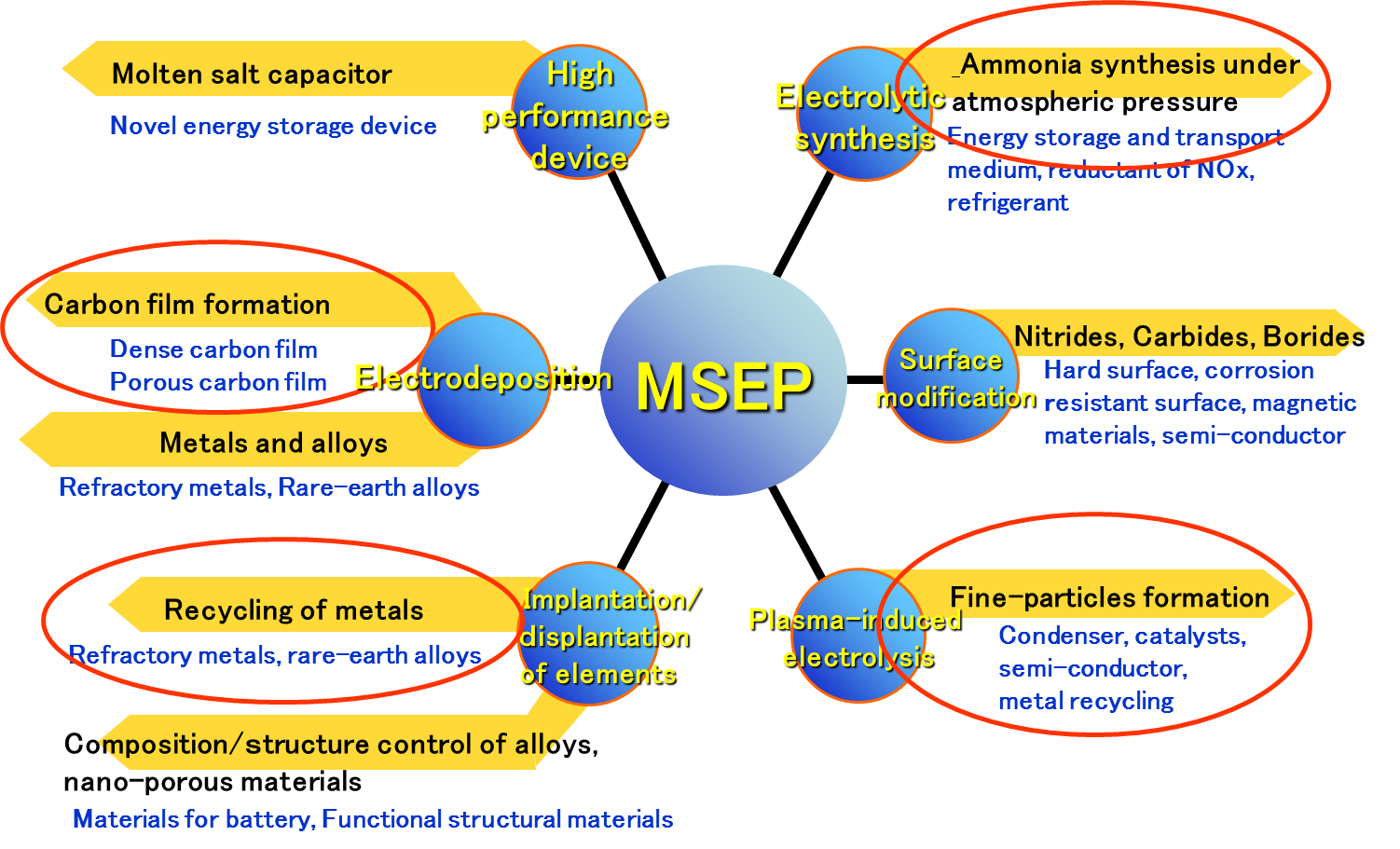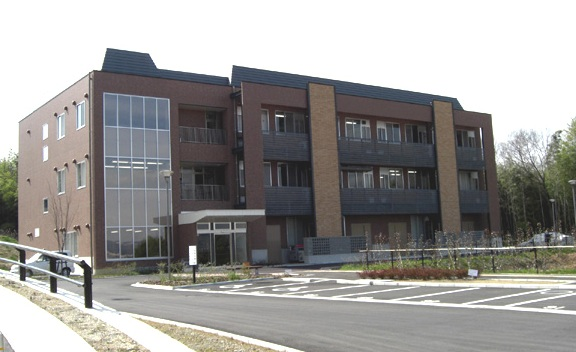e_Introduction
I’MSEP Co., Ltd.
University-Launched Venture Company to Create New Industry by Innovative
Molten Salt Electrochemical Processes (MSEP)
Reference; Y.ITO,T.NISHIKIORI,H.TSUJIMURA,Electrochemistry,86(2), 21–28 (2018)
Introduction
Generally, molten salts are chemically and physically stable, highly electrically conductive, and resistant against radiation. In many cases, they dissolve various chemical species with sufficiently high concentration. From an electrochemical aspect, some have wide electrochemical windows. These advantageous characteristics of molten salt systems offer considerable merits in material synthesis/tailoring and energy conversion applications. Even though we can utilize almost all of the elements for such applications by applying molten salt electrochemical processes, the number of elements available for electrochemical processes using aqueous solutions is limited.
Focusing on the above advantageous characteristics of molten salt systems, traditional industrial electrochemical processes have been developed so far. Leaving aside ancient history, this owes much to the brilliant achievements of 19th century scientists, especially Sir Humphry Davy who isolated alkali-metals from molten chloride, Michael Faraday who established the laws of electrolysis using molten lead chloride as an example, Charles Hall and Paul Hèroult who devised the electrolytic routes to aluminum, and Henri Moissant who isolated fluorine gas using molten salt electrochemical process, and many other giants in the field of molten salts until now through the 20th century. In the 21st century, the role of molten salts in science and technology, especially in the fields of energy, environment, and resources, is becoming more and more important.
Against the above background, and having been charmed by such attractive features of molten salt systems, our fundamental studies of molten salt electrochemistry are inventing and developing various novel molten salt electrochemical processes to create new tidal currents in the industrial fields of energy, environment, and resources. Fig. 1 shows a perspective view of the technological seeds that we at the I’MSEP (Innovation by Molten Salt Electrochemical Processes) have developed and are currently directing toward industrialization.

Fig. 1 Perspective of technological seeds
Among these technological seeds, the following four are currently reaching the industrialization stage:
(1) Electrolytic synthesis of ammonia from water and nitrogen under atmospheric pressure;
(2) Electrochemical formation of various types of carbon film and their applications;
(3) Plasma-induced discharge electrolysis to produce various metal/alloy nanoparticles;
(4) Recycling of crucial metals using a bifunctional electrode.
They can provide key technologies for future low-carbon societies. Researchers, engineers, managers, economists, and policy makers are encouraged to recognize the potential of molten salt electrochemical processes and embrace the bright future of molten salt chemistry and technology.
Please contact us at I’MSEP if you are interested in our technological seeds and activities:
Table 1 Company profile
| Company name | I’MSEP Co., Ltd. |
| Founded | April 6, 2006 |
| President and Representative Director | Dr. Yasuhiko Ito (Professor Emeritus of Kyoto Univ.) |
| Head Office | 134, Chudoji-Minamimachi, Shimogyo-ku, Kyoto, Japan Zip 600-8813 |
| R&D Division | D-egg 310, 1 Jizodani, Kodo, Kyotanabe-shi, Kyoto, Japan Zip 610-0332 |
| Tel/Fax | +81-774-63-2051 |
| Please click “Contact us” |
Note :Please send any postal mail to the R&D Division.

R&D Division in D-egg at Doshisha University
